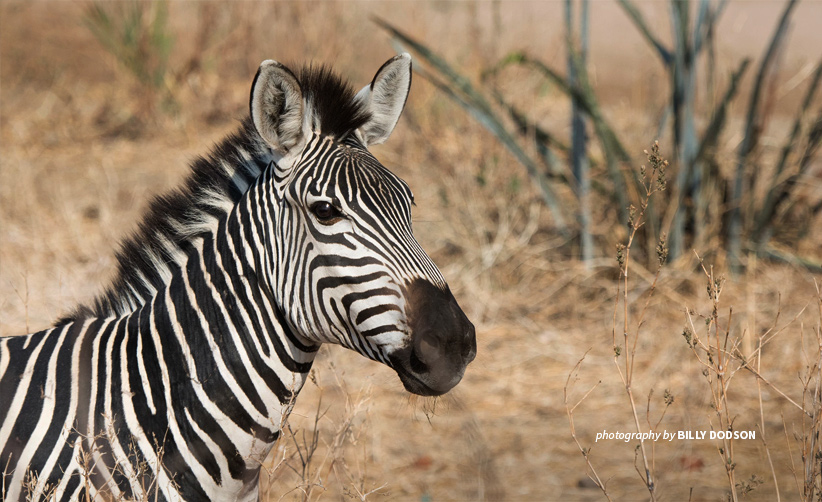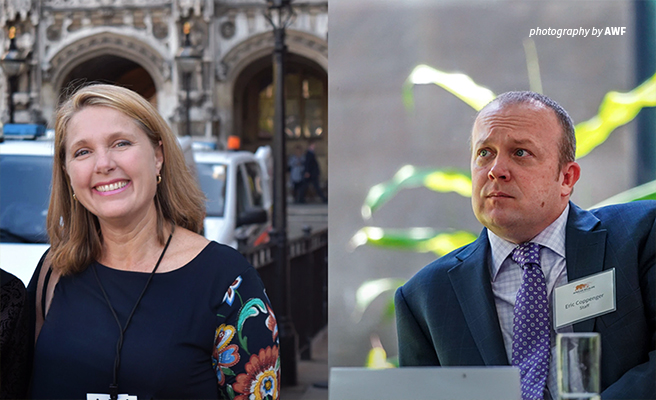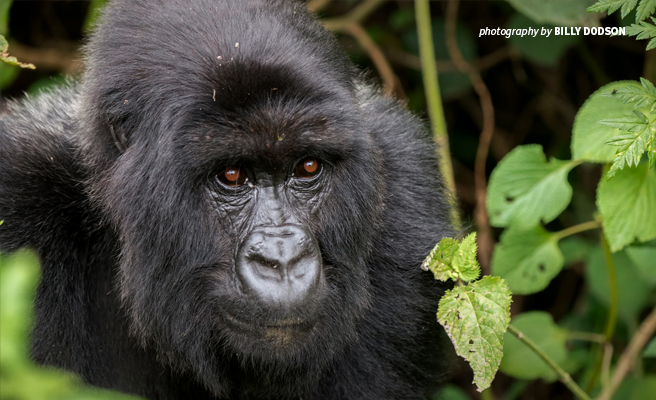African biodiversity critical for international development

Our global International Policy and Government Relations team — located in Kenya, Switzerland, and the United States — connects African Wildlife Foundation’s on-the-ground conservation programs with government priorities across the world to advise on, develop, and implement conservation-friendly policies that address drivers of wildlife loss in focal landscapes across the African continent.
By elevating the conservation of African wildlife and wild lands in the international development arena, AWF strives to deliver conservation outcomes that also enhance the continent’s social, economic, and political future. This effort leads to better outcomes for people and wildlife, and also to more public funding from government agencies for the work of AWF and our partners on the ground.
Andrea Athanas, Program Design Director, Europe and Eric Coppenger, Vice President, International Policy & Government Relations at AWF explain how the team works hand in hand with international partners to integrate biodiversity protection into climate change mitigation and adaptation, poverty reduction, and youth empowerment — some of the continent’s most urgent and complex issues.

AWF Program Design Director Andrea Athanas and Vice President, International Policy & Government Relations Eric Coppenger
Why do foreign governments invest in biodiversity programs on the African continent?
Eric: The contribution of nature to every aspect of life is becoming increasingly clear to people all over the world. People care about biodiversity, and their governments have pressure from constituents to help protect it. Increasingly, governments also understand, through their own experiences, that growth that does not preserve ecosystems is unsustainable, and the fallout impacts everyone. Also, natural systems are recognized in international conventions and treaties — for example, the U.N. Sustainable Development Goals have identified biodiversity as a global good that all nations have an obligation to protect.
Andrea: Europe and Africa are bound together by geography, history, economy, and biodiversity. What happens in Africa affects Europe, and what happens in Europe shapes events in Africa. Birds that summer in Europe winter in Africa, so habitat lost in Africa affects populations in Europe. The movement of people between the continents has ebbed and flowed over time. When crops fail in Africa due to climate change, people search for jobs in Europe to support families back home. When companies in Europe search for raw materials for their products, Africa is a primary source. Europeans know that when ecological systems become degraded in Africa and biodiversity is lost, supply chains get disrupted, people move in uncontrolled ways, and the ripple effects are felt in Paris, London, Brussels, and Berlin. The European interest in Africa’s biodiversity stems not just from a passion for wildlife, but also an acute awareness of the importance wildlife holds in the long-term peace, security, and wellbeing of life in Africa and in Europe.
How does AWF help African countries include provisions for biodiversity in their development plans?
Andrea: AWF encourages African leaders to acknowledge the essential role of wildlife and wild lands in development and drive the requisite shifts needed in policy, planning, and finance to protect these natural assets. By engaging African governments, AWF has the opportunity to help countries across the continent put biodiversity into their development agenda and nurture beneficial partnerships with countries negotiating long-term investment frameworks in Africa. AWF’s engagements in the larger development sphere through the International Policy & Government Relations team help African countries develop stronger partnerships for conservation. These solutions include land-use planning strategies, protected area management, species conservation programs, as well as economic empowerment interventions — all of which help sustain essential ecosystems.
The European Union is currently renegotiating its relations with Africa — through the Cotonou Agreement with African, Caribbean, and Pacific countries as well as through the Joint EU-Africa Strategy, which sets out priorities for investing in Africa’s biodiversity. These strategies and agreements guide multilateral engagements and partnerships that deliver sustainable economic growth, financial inclusion, and good governance for the next decade. With our longstanding commitment to wildlife conservation on the continent and our forward-looking emphasis on empowerment, we provide evidence-based solutions for both African and European policymakers. In November 2019, Maria Marques, Member of European Parliament, joined AWF conservation experts and the Rwanda Development Board on a field visit in Kinigi, learning about how mountain gorilla conservation has benefited the neighboring communities. Such immersive experiences help parliamentarians speak up about the role biodiversity plays in driving sustainable development in Africa.

International partnerships help protect threatened wildlife species like mountain gorillas and create local opportunities
How does biodiversity protection improve livelihoods and resilience?
Eric: The same systems that sustain wildlife and people also sustain industry. To grow food, we need water and pollinators and climate regulation; industrial production also requires water and energy. For livable cities, we need green space and clean air. Ecosystems underpin these conditions. AWF’s work over the last six decades has helped to conserve critical wildlife populations and natural habitats. Collaborating with conservation partners, wildlife management authorities, and local communities, we have helped various stakeholders manage these natural assets for growth. For instance, communities who own these assets can leverage them for income to pursue other activities like wildlife tourism, which can raise long-term investments in education, health, and infrastructure.
Andrea: Through IUCN’s Sustainability and Inclusion Strategy for Growth Corridors in Africa (or SUSTAIN-Africa) program, conservation partners teamed up with major actors in Southern Tanzania, one of the country’s most productive agricultural regions. Importantly, this rich ecosystem is also home to significant wildlife populations and habitats. AWF helped upskill smallholder farmers with conservation-friendly farming methods to reduce negative impacts on the wider landscape, including their water sources. In Kilombero, we distributed a new drought-resistant variety of sugarcane that not only withstands weather fluctuations but also produces greater yields of a high-quality product. Farmers who adopted new techniques have multiplied profits and are finally able to invest in their enterprises while improving their standard of living. This participatory approach has helped more than 700 farmers develop more sustainable livelihoods, ensuring food security as weather patterns fluctuate across the region. And now, it is providing a pathway to increasing production without converting more land to agricultural production, leaving habitat for important wildlife like the red colobus monkey and maintaining connectivity between Selous Game Reserve and the Udzungwa Mountains so that elephants can roam throughout Southern Tanzania.